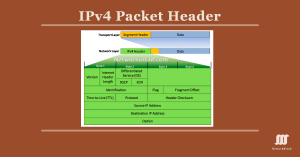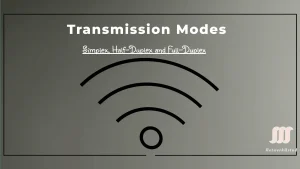This article clarifies switching concepts, a cornerstone of networking and telecommunications, used in LANs, WANs, and PSTN with Cisco switches. Switching and frame forwarding rely on ingress ports and destination MAC addresses, managed via the MAC address table (CAM table) on Cisco Catalyst switches. For CCNA and CCNP students, mastering these concepts is essential for exams, covering frame forwarding, flooding, and table population. Explore practical insights and configurations to excel in your Cisco certification journey.
Switching Basics
Switching concepts hinge on two criteria: the ingress port (where a frame enters) and the destination MAC address (where it’s sent). Cisco switches, like the Catalyst 9200, use these to forward Ethernet frames, relying on a MAC address table (CAM table) for decisions.
Frame Forwarding Process
- Ingress: The port where a frame arrives (e.g., Port 1).
- Egress: The port where the frame exits (e.g., Port 7), determined by the MAC address table.
- MAC Address Table: A dynamic table mapping MAC addresses to ports, updated via source MAC learning.
Example MAC Address Table
| Ingress Port | Destination MAC Address | Egress Port |
|---|---|---|
| 1 | DB-CD-AC-3D-26-25 | 7 |
| 6 | C3-A3-A2-35-A6-66 | 8 |
| 2 | EE-01-A1-AF-00-01 | 1 |
The network switch has only one intelligence: the ability to keep up the MAC address table and decide to send traffic based on the ingress port and the message’s destination address.
Every switch has only one master table that describes an association between an address and a port. The Cisco switches forward Ethernet frames based on the destination MAC address of the frames.
Dynamically Populating the MAC Address Table
Cisco switches dynamically build the MAC address table (CAM table) to forward traffic efficiently, a critical skill for CCNA/CCNP students. This table, stored in high-speed CAM memory, maps source MAC addresses to ports and is influenced by protocols like Spanning Tree Protocol (STP) to prevent loops.
MAC Address Learning Process
- Step 1: Switch receives a frame from Host 1 on Port 1; if the MAC table is empty, it associates Host 1’s MAC with Port 1.
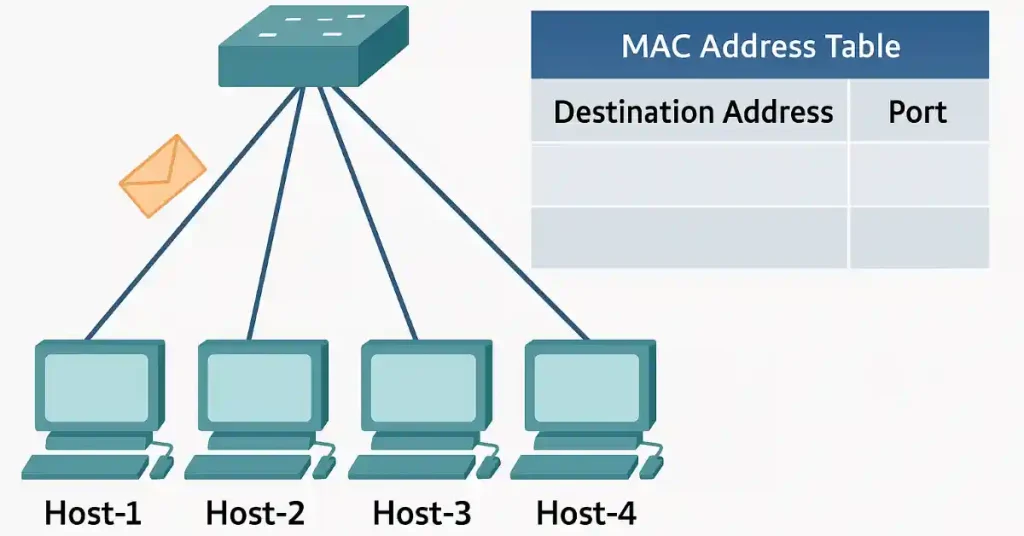
- Step 2: If the MAC exists, the ageing timer (default 5 minutes) resets.
- Step 3: Switch checks the destination MAC; if unknown or broadcast (all Fs), it floods the frame to all ports except the ingress port.
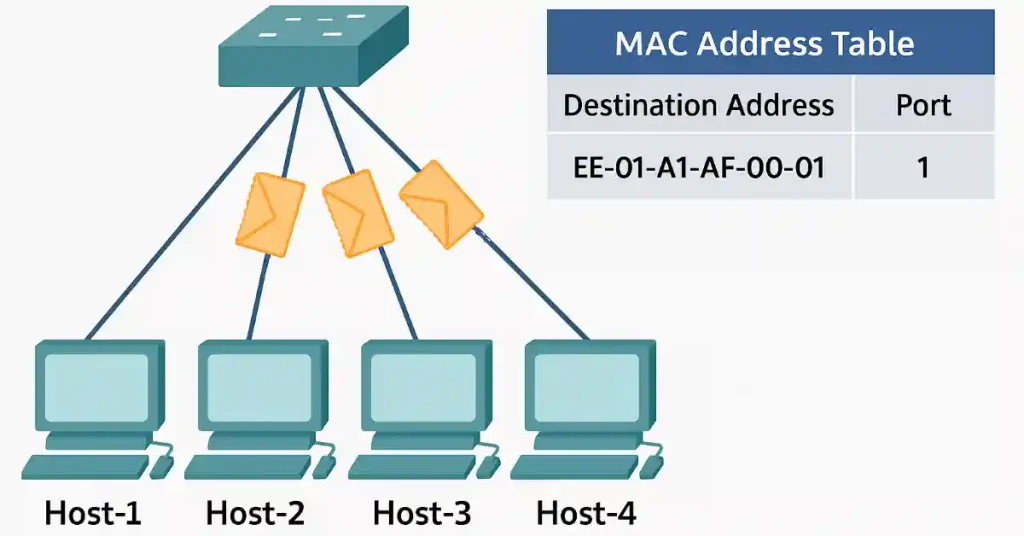
- Step 4: Host 4 responds with a unicast frame; the switch adds Host 4’s MAC and its port to the table.
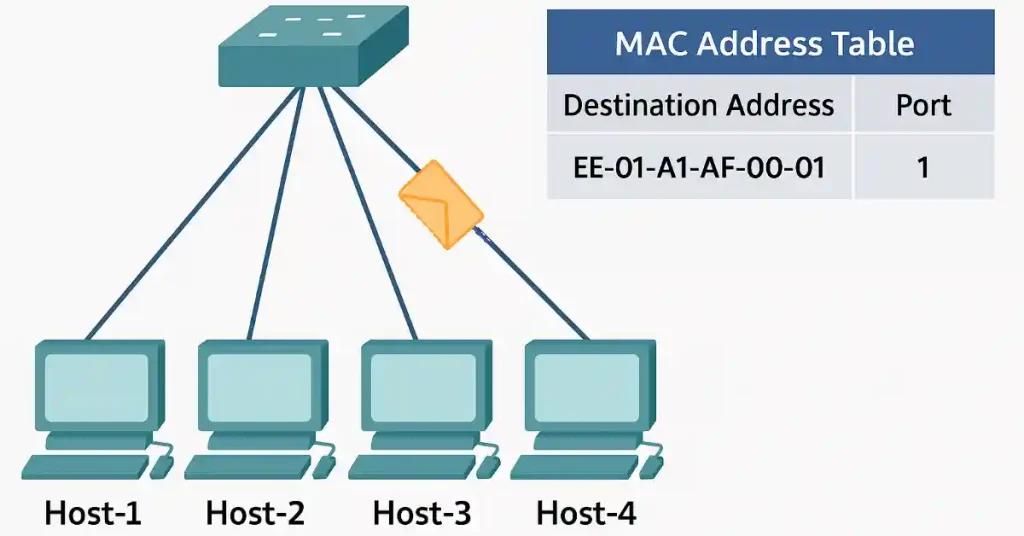
- Result: Hosts 1 and 4 can now communicate directly without flooding.
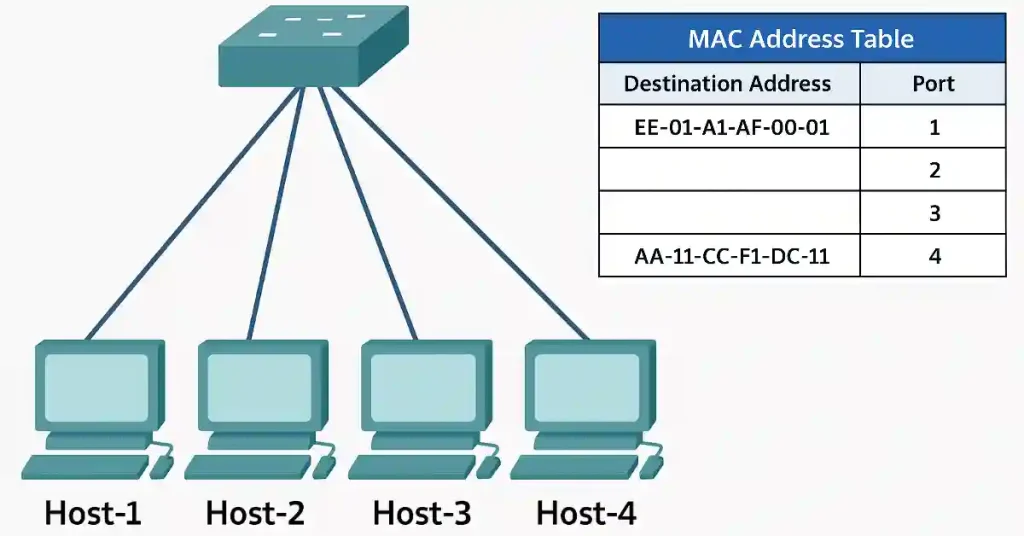
FAQs
What is the role of a network switch in managing broadcast traffic?
A network switch manages broadcast traffic by using a MAC address table to direct data packets only to the intended port, preventing unnecessary data flooding across all ports. This improves network efficiency and reduces congestion, ensuring smooth communication between devices.
How does a MAC address table help in network switching?
The MAC address table maps device MAC addresses to specific switch ports, allowing the switch to forward packets directly to the correct destination. This targeted delivery minimizes broadcast traffic and enhances network performance
What are the benefits of using a hierarchical network over a flat network?
A hierarchical network reduces broadcast traffic and improves scalability by organizing devices into layers like core, distribution, and access. This structure enhances manageability and performance compared to the flat network’s single-layer approach.
Why is broadcast traffic a problem in flat Layer 2 networks?
Broadcast traffic in flat Layer 2 networks can overwhelm devices as data is sent to all connected nodes, leading to congestion and reduced performance. This inefficiency is mitigated in hierarchical designs with better traffic management.
What are the key components of a network switch’s MAC address table?
The MAC address table contains destination MAC addresses and their corresponding port numbers, enabling the switch to forward packets efficiently. It is dynamically updated as devices connect or disconnect, ensuring accurate traffic routing within the network.


